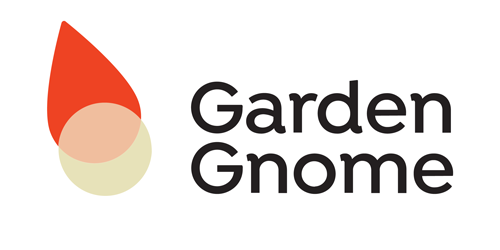---------------------------------
This was using v6.1.8, haven't downloaded and tested 6.1.9 yet; but no mention of these fixes in the blog, so likely still present.
If you have Pano2VR Pro you can skip to the video section where I'll explain how broken Transitions are, the FoV mode is set wrong by default and why you've (possibly) been doing it wrong all this time, because otherwise you'd have noticed it too.
Video is 5 mins long, watch at x2 speed and still get the gist, if you can read text captions quickly.
-------------
OK, if you also use Pano2vr Lite and want to know why I was checking out Transitions in Pano2vr Pro, or just want the background; here goes...
As I'm getting very bad results when transitioning between URLs in Lite, with Black (or White) screens, followed by piecemeal buildup of the panorama and Hotspot Icons floating in an empty screen (found a fix for that thanks to Hopki, but you're all probably still doing it wrong too, it's the weird default settings getting you again), and Preview tiles often not loading before the full Res tiles, I went back to a demo of Pro to see if the extra cost was worth it for those sweet, sweet Transitions, with all my problems disappearing.
(Spoiler: Nope).
I have found that IE exhibits these problems less than my preferred Firefox - even though I'd never usually use IE myself - but other browsers on iPads, iPhones, Android Tablets and phones are all varying degrees of 'just as bad' as Firefox.
As my PC screen recording software seems to be getting its data from some buffer that's slightly different to what you see and at too slow a framerate to catch all the details, I recorded this with a camera at 60fps then extracted individual frames.
These screenshots show the Loading bar is a work of fiction, Preview Tiles sometimes don't show up and holes are left where they should be, while the Full Res tiles are already visible. I know the Preview tiles aren't appearing, because I've added a Gaussian Blur to them, which looks better than the blocky alternative of low quality and small size with the added advantage of even smaller filesizes (blurred images need less data), so the visual difference is obvious.
You also see the Hotspots (when they're embedded in skin.js) are not only contributing to a larger, slower-loading skin.js, as their data is encoded as Base64 text; they are displayed before anything else, so appear floating in space and looking...silly.
Faster and better is to change the Inline Image size from the (yet another one...) Default of 10000 bytes to 10 bytes; so all images are exported as PNGs and loaded at the right time, making skin.js run faster and producing smaller filesizes. Thanks to Hopki for that one yesterday.
.
.
Video Section
----------------------
To see if Pro was worth upgrading to, I installed the Pro Trial on a second PC and tested out what I was hoping would be improvements.
I did find that Transitions don't work at all between URLs, only Nodes, despite the option being available. Not sure why/how it would be so hard to store the panorama of the last URL and even just allow a Cross Dissolve/Iris/Wipe between that and the next one - Zooming possibly being too complicated? - but assume that's because you're not supposed to Upgrade; you just buy Pro first and make all your Panoramas in it.
If you look at the photos above you'll see the one where the next URL's hotspot was already loaded and visible and being drawn over the panorama of the current one, when it supposedly hadn't been loaded yet; so it apparently would be possible to do something similar(ish) with actual panoramas.
Maybe even using those vestigal appendix-like files: location_ovr.jpg which is a mini 512x256 panorama image that could be displayed as an alternative to a flipping Black or White screen? Hmmm.. maybe?
I'd have to remake all my URL linked panoramas as Node-based again because of this, so would it be worth it? Place your bets now...
The video below shows that not only are Transitions not worked properly, there are very limited options available (when zooming anyway; irises and wipes are just... no.).
If you didn't notice this before it's possibly because you've got the FoV Mode set on the default value of Vertical - which is for Mobile phones in Portrait/upright mode- and forgot to change it when you made your deskstop-centric tours. Well, why would you? Defaults are there for a reason, right?
Not only does this hide some of the brokenness of the Transitions, but if you don't change it - even if not using Zooming or other Transitions, or just using a Cross Dissolve - your Panoramas FoVs will look wrong on anything other than the desktop you developed on; because you will have adjusted the Default View FoV to look right on the desktop, using the wrong FoV Mode, so when you do view it on mobile, it's wrong for that. It also scales hotspots differently and they get quite small.
The video shows the problems with using Transitions with Zooms, in an attempt to look something less boring than a cut or a crossfade, and closer to Matterport and others. Although once you set FoV Mode to Vertical, there are several other places where it causes problems; most notably in the Viewing Limits and FoV Min/Max areas.
You do set those to stop people zooming in and out by silly amounts? No? Then you're less affected.
5 Minute video here: https://youtu.be/d20hJKu_q2w
.
So, given that Transitions aren't working correctly when I want to display panoramas on both Landscape/Desktop/Horizontal and Portrait/Mobile/Vertical and the setting that covers these: Diagonal, messes them up, I'll delay the upgrade to Pro just yet.
But if you already have Pro, how are you managing/avoiding these problems?
